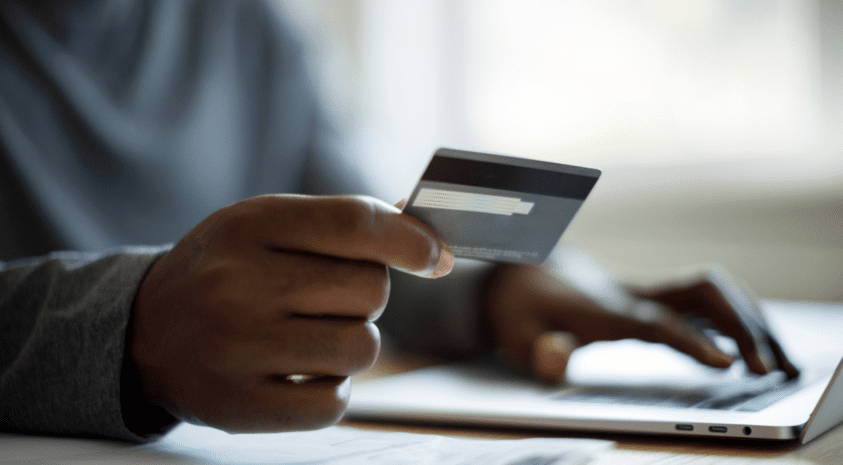Credit cards come with a list of pros and cons. On the one hand, they offer convenience, consumer protections and possibly rewards. On the other hand, credit cards can temp you to overspend, they tend to have variable high interest rates, and they may have late fees or penalties.
If you carry credit card debt, you’re not alone. A recent survey found that 30% of Americans have between $1,001 and $5,000 in credit card debt, 15% have $5,001 or more in credit card debt, and about 6% have more than $10,000 in credit card debt.1
Credit card debt and retirement
As you near retirement, paying off credit card debt is crucial. This debt can eat into your retirement nest egg and reduce your standard of living. For example, if your retirement budget includes $700 in credit card payments, that’s a big bite out of your budget that could go toward bills, groceries and enjoying your golden years!
How to pay off credit card debt
Paying off credit card debt isn’t easy, but there are several strategies that can help. In honor of Credit Education Month, consider one of these four proven credit card debt repayment strategies:
1. Debt snowball method
With this strategy, you pay off your debts starting with the smallest and working toward the largest. For example, let’s say you have three credit cards with balances of $2,000, $3,500 and $5,500. With this method, you would make the minimum payments on the $3,500 and $5,500 debts, while focusing on paying as much as possible on your smallest $2,000 debt. Once the $2,000 debt is paid off, you “snowball” the money you were paying on the $2,000 debt toward the $3,500 debt. Then again, once the $3,500 debt is paid off, you “snowball” the money and focus on paying the $5,500 balance last.
This method is advantageous because of the excitement and motivation you receive when you pay off the smaller debts. That debt is out of your way—and you’re ready to tackle the next and the next!
2. Debt avalanche method
With the debt avalanche method, you focus on paying off debts with the highest interest rates first. To use this method, make minimum payments on your lowest interest debts each month, while funneling as much money as possible toward your debt with the highest interest. When your debt with the highest interest rate is paid off, “avalanche” the money you were paying on the largest debt toward the debt with the next highest interest rate. Because you’re tackling the debt with the highest interest rate first, this method will help you save on interest.
3. Debt consolidation with a personal loan
If you have good credit, but your credit card debt is overwhelming, you could consider consolidating your debt with a personal loan. With this strategy, you borrow the amount you need to pay off all your credit cards. Then, you make a single monthly payment toward your personal loan instead. Interest rates for personal loans are stable and tend to be lower than for credit cards, so this method could help you save money. In addition, this method gives you a fixed repayment timeline, so you know exactly when you’ll become debt-free.
4. Debt consolidation with a 0% balance credit card
Another way to consolidate your debt if you have a good credit score is with a 0% balance credit card. Getting another credit card may seem counterintuitive, but this type of card allows you to transfer all your outstanding credit card debt to one account. A balance transfer fee is usually required, but this type of credit card may help you save in the long run because you’ll have a limited amount of time, known as an introductory period, to pay off the debt at a 0% interest rate. You only get the 0% interest rate for a limited time, usually up to 21 months. If you haven’t paid your balance at that time, you will start paying the standard variable interest rate.
This method is a good option if you know your budget will allow you to repay the balance within the introductory period—and you know you’re disciplined enough to not use the credit card for new purchases.
Paying off debt is challenging but important!
While you’re focused on paying off credit card debt, you will likely need to change your lifestyle for a bit. Creating a monthly budget can help you stay focused on your goals while helping you find ways to cut costs and save money. Also, you should avoid using your credit cards while you’re in repayment mode. Instead, use cash or debit for purchases.
If you stay disciplined, you could enjoy the rewards of carrying zero credit card debt into retirement!
We’re here for you.
Do you have questions about how credit card debt may impact your retirement? Are you unsure how to balance saving for retirement while also paying down credit card debt? Bankers Life investment professionals are here to help! To get started, contact us today, and a local Financial Representative will reach out to you.
1Yahoo!, Jaw-Dropping Stats About the State of Debt in America, https://www.yahoo.com/now/jaw-dropping-stats-state-credit-130022967.html, January 30, 2023.
Bankers Life Securities, Inc., Bankers Life Advisory Services, Inc., and their representatives do not provide legal or tax advice. Each individual should seek specific advice from their own tax or legal advisors.
This material is for general information only and is not intended to provide specific advice or recommendations for any individual. There is no assurance that the views or strategies discussed are suitable for all investors. To determine which investment(s) may be appropriate for you, please consult your financial professional prior to investing.
Bankers Life is the marketing brand of various affiliated companies of CNO Financial Group including, Bankers Life and Casualty Company, Bankers Life Securities, Inc., and Bankers Life Advisory Services, Inc. Non-affiliated insurance products are offered through Bankers Life Securities General Agency, Inc., (dba BL General Insurance Agency, Inc., AK, AL, CA, NV, PA).
Securities and variable annuities offered through Bankers Life Securities, Inc. Member, FINRA/SIPC (dba BL Securities Inc., AL, GA, IA, IL, MI, NV, PA). Advisory products and services offered by Bankers Life Advisory Services, Inc. SEC Registered Investment Adviser (dba BL Advisory Services, Inc., AL, GA, IA, MT, NV, PA).
Investing involves risks including possible loss of principal. No investment strategy or risk management technique can guarantee return or eliminate risk.
Investments are: Not Guaranteed—Involve Risk—May Lose Value.



